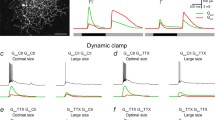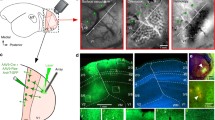Abstract.
A biophysically realistical model of the primary visual pathway is designed, including feedback connections from the visual cortex to the lateral geniculate nucleus (LGN) – the so-called corticofugal pathway. The model comprises up to 10 000 retina and LGN cells divided into the ON and the OFF pathway according to their contrast response characteristics. An additional 6000 cortical simple cells are modeled. Apart from the direct excitatory afferent pathway we include strong mutual inhibition between the ON and the OFF subsystems. In addition, we propose a novel type of paradoxical corticofugal connection pattern which links ON dominated cortical simple cells to OFF-center LGN cells and vice versa. In accordance with physiological findings these connections are weakly excitatory and do not interfere with the steady-state responses to constant illumination, because during the steady-state inhibition arising from the active pathway effectively silences the nonstimulated pathway. At the moment of a contrast reversal the effect of the paradoxical connection pattern comes into play and the depolarization of the previously silent channel is accelerated, leading to a latency reduction of up to 4 ms using moderate synaptic weights. With increased weights reductions of more than 10 ms can be achieved. We introduce different synaptic characteristics for the feedback (AMPA, NMDA, AMPA+NMDA) and show that the strongest latency reduction is obtained for a combination of the membrane channels (i.e., AMPA+NMDA). The effect of the proposed paradoxical connection pattern is self-regulating; because the levels of inhibition and paradoxical excitation are always driven by the same inputs (strong inhibition is counterbalanced by a stronger paradoxical excitation and vice versa). In addition, the latency reduction for a contrast inversion which ends at a small absolute contrast level (small contrast step) is stronger than the reduction for an inversion with large final contrast (large contrast step). This leads to a more pronounced reduction in the reaction times for weak stimuli. Thus, reaction time differences for different contrast steps are smoothed out.
Similar content being viewed by others
Author information
Authors and Affiliations
Additional information
Received: 22 January 1996/Accepted in revised form: 20 May 1996
Rights and permissions
About this article
Cite this article
Köhn, J., Wörgötter, F. Corticofugal feedback can reduce the visual latency of responses to antagonistic stimuli. Biol Cybern 75, 199–209 (1996). https://doi.org/10.1007/s004220050287
Issue Date:
DOI: https://doi.org/10.1007/s004220050287




